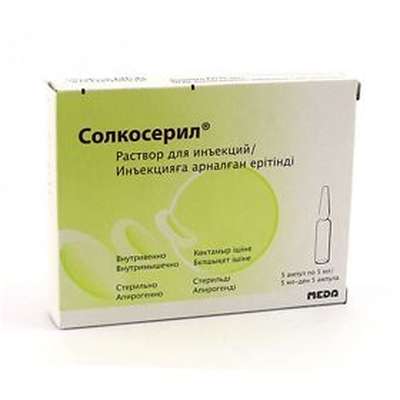Adaptive Immunity
27 Jul 2017
About antibodies, T-cells and differences in adaptive immunity from congenital
Adaptive (it would be more correct to call it "adaptive") immunity is a special way of protecting against a particular enemy, against a particular living being, specific molecules of this living being that have entered our body, the organism of a multicellular organism. The response of the defense adaptation against this invasion begins after the invasion, but it is prepared in advance.
There is a genetic constructor that creates an almost infinitely great variety. Its finitude is dictated by the number of cells more that can not be made. What is the idea of this designer? There are special types of cells that use a molecular machine that makes mutations. This machine changes one nucleotide to another, this is deaminase, induced in certain cells upon their activation.
These specific cells are called lymphocytes. And they have two ideas of a genetic constructor. The one I mentioned about is a change in the structure of the gene in which a molecule is written. And the second is the multiplicity of segments from which the gene is assembled. The gene is assembled from several segments, and in each cell there is the head of the molecule encoded in dozens of segments, the neck of the molecule also with several segments, the body of the molecule still some number of segments. Each time you need to take one of the 70 heads, one of two dozen shears, one of several segments, the segments that encode the body. In each cell, a special construction is obtained, always having a head, neck and body, but always different from the others, from those molecules that make another cell.
Each birth cell collects this gene in an original way. Moreover, on the junction of these sites, mistakes, insertions or deletions are made, and more variants are obtained. Finally, these molecules are assembled from two such structures. And the number of options is a product of the number of variants of each molecule. Thus, it is possible to make unique molecules in newly born cells called lymphocytes. In each lymphocyte, a slightly different molecule appears.
These molecules are used in two ways, primarily as sensors. And they can never be needed in life if this sensor does not meet what it can feel, something that it can grasp. But a variety of sensors, which is estimated at about a hundred million, can detect almost any foreign substance. Because out of a hundred million at least some one will be suitable to grab someone else's substance. So the idea is to make a variety.
But this variety is represented by single copies of cells that have one or another molecule. Have made a molecule A - there will be only a few such cells. The molecule B was made, and so on, hundreds of millions, but each copy is only a few, this is a blank.
When the invasion occurred, the body does not know what will invade today, which will invade tomorrow. He must be ready for any invasion. And he must adapt to the specific invasion that has occurred. The X molecule is involved - we need to have a sensor for X and we need to make an antidote against X. The molecule Z has invaded - we make an antidote against Z. For this we need to have a wide variety of blanks. That on any another molecule or set of molecules to have blanks. But single cells can not be protected from a rapidly multiplying stranger, for example from a virus or a bacterium, their number is estimated at millions. And our individual cells can not do anything, even having excellent sensors, having methods of protection.
Hence, the basis of adaptive immunity is the first - the creation of a huge variety of cells with sensors and sensor molecules. The second is the multiplication of the cell that proved to be suitable for the intruder. Without multiplying the adaptive reaction does not work, it will be helpless. That is why this adaptation, this reaction requires at least a few days, while the multiplication of these blanks and their conversion into maximally active cells capable of protecting from single billets are taking place.
How do they protect? There are two ideas. First: the multiplying cells produce a large number of sensory molecules, but only for export. Now, not on the surface, they are like antennas, but are thrown outward by a trillionth amount, spreading all over the body. These small molecular traps find a stranger and other people's molecules, wherever they hide, these antibodies are called antibodies. The idea is that the cells that were able to produce antibodies to this foreign agent, X, anti-X, were multiplied, and these antibodies spread throughout the body.
The second idea works when the stranger hides inside our cells, for example a virus. The virus immediately penetrates into our cells, and everything, inside the cell, we can not get it. What to do? Strategy: to kill such cells is cruel, but it saves. And to kill, you need to make a container that has a sensor on the surface that recognizes the infected cell and kills it. Such a container is a T-cell (T, because it is born in the thymus, in a special organ). And in this container is hidden deadly molecule, which will kill the infected cell. It is hidden, because it is impossible to produce a deadly molecule like antibodies and spread throughout the body: it will kill ourselves. Therefore, it must be very targeted to deliver, hidden inside such a container. The container serves as a container, and to find the addressee and was not mistaken, a special sensor, a receptor, is made by which she recognizes our cell infected with the virus.
It comes into tight contact with it, seals this contact, and inside the sealed gateway pours out a poisonous molecule that kills this single cell. And here's a nice idea: the cell that was given the "die" signal does not fall apart, it as it is, like a pouch, digests itself inside and becomes a ready-made sac that will be devoured by special eater cells. And none of the neighboring will not suffer. That is, a suicide program is included, and very accurate and very delicate, so that neighbors do not harm. It turns out that, no matter where the infected cell is, the container will find it, give it an individual, personally "die" signal and this death will occur very delicately and without damaging even the neighbors, let alone the removed cells.
Thus, adaptive immunity has two tools. One is cells that produce a variety of antimolecules, antibodies that spread these antibodies throughout the body. And the second idea is an individual "die" signal that brings a special container that has certain sensors to recognize who needs to give this signal, that is, the infected cell. Two big ideas, but both lead to the fact that the alien is digested to elementary molecules, which can be used as bricks for the construction of our own, and there will be no signs of others left. In the first case, the antibodies will stick to the stranger, to foreign molecules or to foreign cells, and this will be a black label so that such alien molecules are absorbed and eaten by eating cells. And in the second case, when the infected cell received the "die" signal, it will digest itself.
In both cases, the enzymes of a molecule that split complex molecules into simple molecules work. Complex molecules carry the originality of the microbe or virus and are different from ours, and simple molecules such as amino acids and simple sugars are the same as the viruses that we have, that of bacteria that we have. Therefore, these molecules can be used to usefully use to construct their complex molecules - and the body acts. The idea is to digest large, complex foreign cells and molecules to simple organic compounds that will be usedfully used by our cells, to amino acids, sugars, simple lipids. But to find a stranger you need special antimolecules and include digestion either inside cells that will absorb the found and labeled stranger, or inside those cells where he settled.
Adaptation reaction consists in the fact that suitable cells and molecules multiply, and then there is complete elimination of the signs of someone else up to elementary structures that do not differ from someone else's and are used. This adaptation reaction takes, as a rule, one or two weeks. If everything is successful, we deal with the aliens. And if this battle drags on, it can last for months. In the first case, we call it acute infection and recovery, and in the second case it is a chronic infection, with which immunity is continuously fighting. It can last months and years, but without this struggle the organism will die.
This is the essence of adaptive, or adaptive, immunity. He is always very special only to this stranger, only to this flu, only to this strain, which this year. And next year again a new reaction, already on another strain, and it takes time. It differs from it from innate immunity, which works on any gram-negative bacterium, on any Gram-positive, and works immediately, without preparation. He does not need hours or days, let alone weeks.

 Cart
Cart





